Tested: 1981 Rolls-Royce Silver Spirit Rejuvenates Traditional Luxury
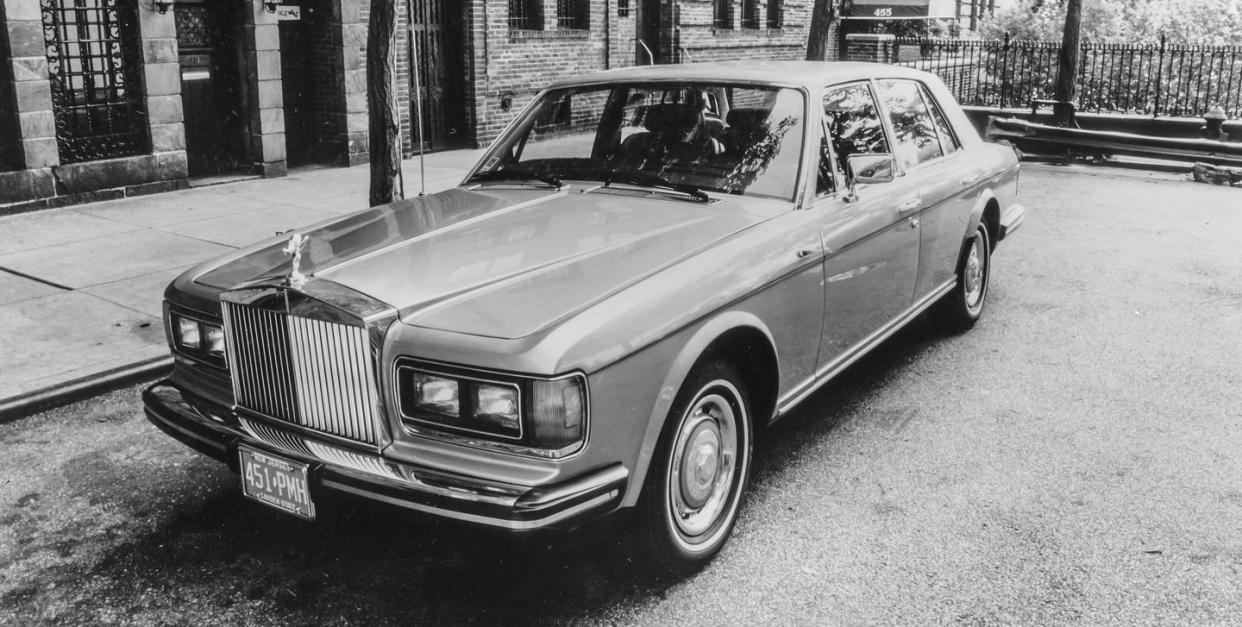
From the December 1981 issue of Car and Driver.
Excuse us if we don't get too Consumer Reports-y in this test. It's just that we don't think enough of you guys are actually considering the new Rolls-Royce Silver Spirit for us to get all solemn about Trunk Liftover Height and Area of Floor-Mat Coverage (both of which are pretty darn good, actually).
This is a staggeringly expensive car. Seeing the window sticker bottom out at $109,000 only hints at the cost, because, in paying so much for a car, you give up not only the principal but also what that sum could be earning for you. Consider this: you take the $109,000 and, instead of buying the R-R, you sock it away in some CD at the prevailing rate for notes over $100,000. Use the first year's interest as a down payment on a Porsche 928. Subsequent interest will cover not only the payments, but gas and insurance as well. Moreover, you can trade off the 928 every two years with this arrangement and never have to touch the original sum. That should give you some idea of how expensive the Silver Spirit is: $109,000 and a new 928 every two years.
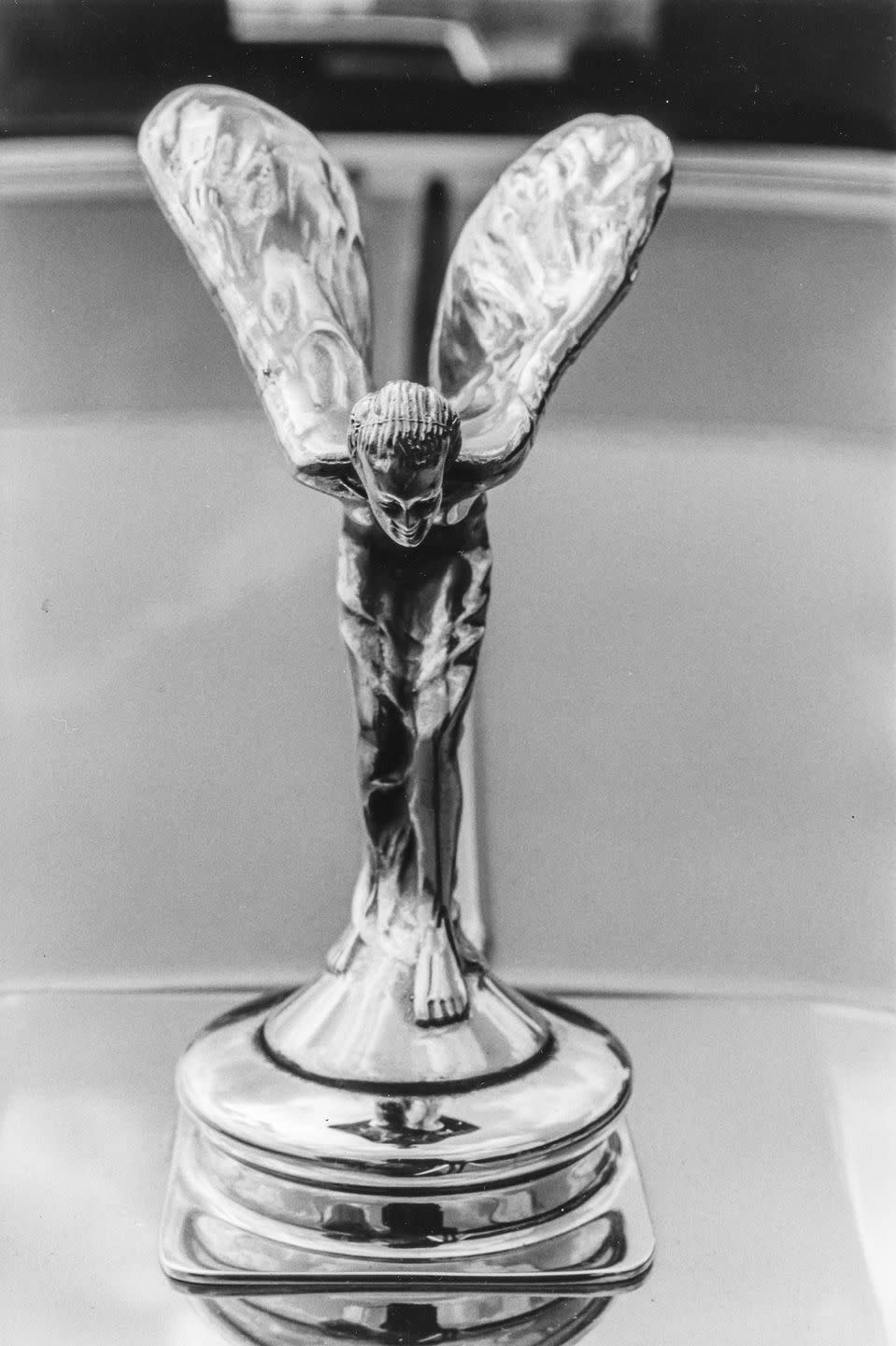
Maybe none of us can afford this Rolls-Royce, but its fantastic price makes it all the more interesting from an academic point of view. Automobiles are a sort of standard task. They all have wheels, seats, and trunks, and they all burn fuel. Every carmaker has to cope with the same problems. So it's fascinating to see how a cost-is-no-object company like Rolls-Royce approaches the assignment. And how well it fares.
Cutting right to the bottom line, we think it fares just fine. If we were rich guys confined to four-doors and had to live with the possibility of outrunning the Tupamaros every so often, we'd go with the Roller. It'll really make dust. All things considered, it's probably no more adroit an escape vehicle than a V-8 Mercedes or a 733i, but it's certainly capable of similar performance. And when you consider that it weighs within a suitcase of 5000 pounds, and that it's quieter inside than a church on Tuesday, that's really saying something.
For the recent past, at least, Rolls-Royces have been great cars to be driven in, but you wouldn't want to do the job yourself. They were totally devoid of any driving feel, like a '55 Chrysler, only more so. It was intentional. Rolls-Royce engineers had a way of describing the tactile sensation they were looking for. "Ball of silk," they'd say. Smooth. No friction. No resistance. The steering felt as though it was some sort of radio hookup to the front wheels. The shift lever, in fact, moved only a set of electrical contacts, which telegraphed instructions to servos on the transmission. You encountered the world's most beautiful detents when you moved the lever, and nothing more. The rest of the car was the same way. It was a conspicuously difficult way of carrying out the automotive assignment—nobody could ever say R-R took an easy hit—but it wasn't at all rewarding to those of us who prefer the snick of a well-connected five-speed.
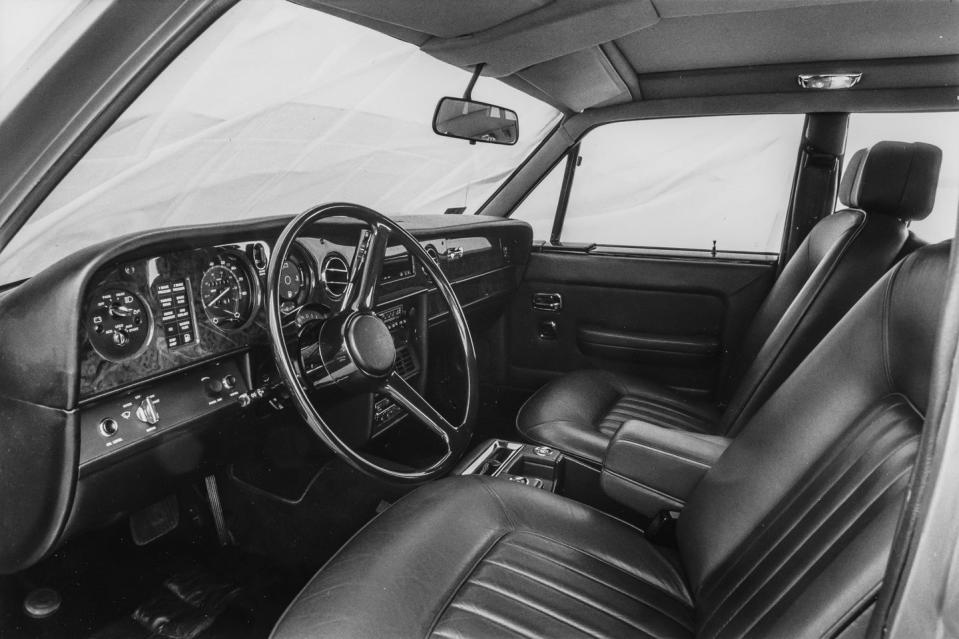
The difference between the recently obsolete Silver Shadow II and the new Silver Spirit is that you'd like the new one. It somehow manages to feel right to the driver without repudiating the "ball of silk" philosophy of past models.
In fact, Rolls-Royce didn't repudiate anything with the Silver Spirit. Most particularly not bulk. Or weight. Or prodigious fuel consumption. It scores 10 EPA mpg and costs the company—and ultimately the buyer—$650 in federal gas-guzzler tax for each example sent to the U.S. Rolls-Royce does not downsize to avoid some piddling tax, thank you very much. The new car is as heavy as the model that went before, slightly lower, and just over two inches wider. Really, it's meant to be the same car with a new body and a few significant engineering revisions. The styling improvement is questionable. Behind the trademark R-R grille stands a bland, middle-European sedan. People who see the front give it recognition followed by all due respect, but from the back it could just as well be German.
From inside, of course, it's pure Rolls-Royce. The dash is still wood burl. The windowsills are made of straight-grained wood finished to perfection. The floor carpets, both front and back, are covered with floor mats made of lambskin and dyed to match the interior. Naturally, the seats are of fine leather, and the front buckets are adjustable eight ways and have backrest-angle controls. Automatic temperature control is on duty at all times. This is the normal stuff of any Rolls-Royce.
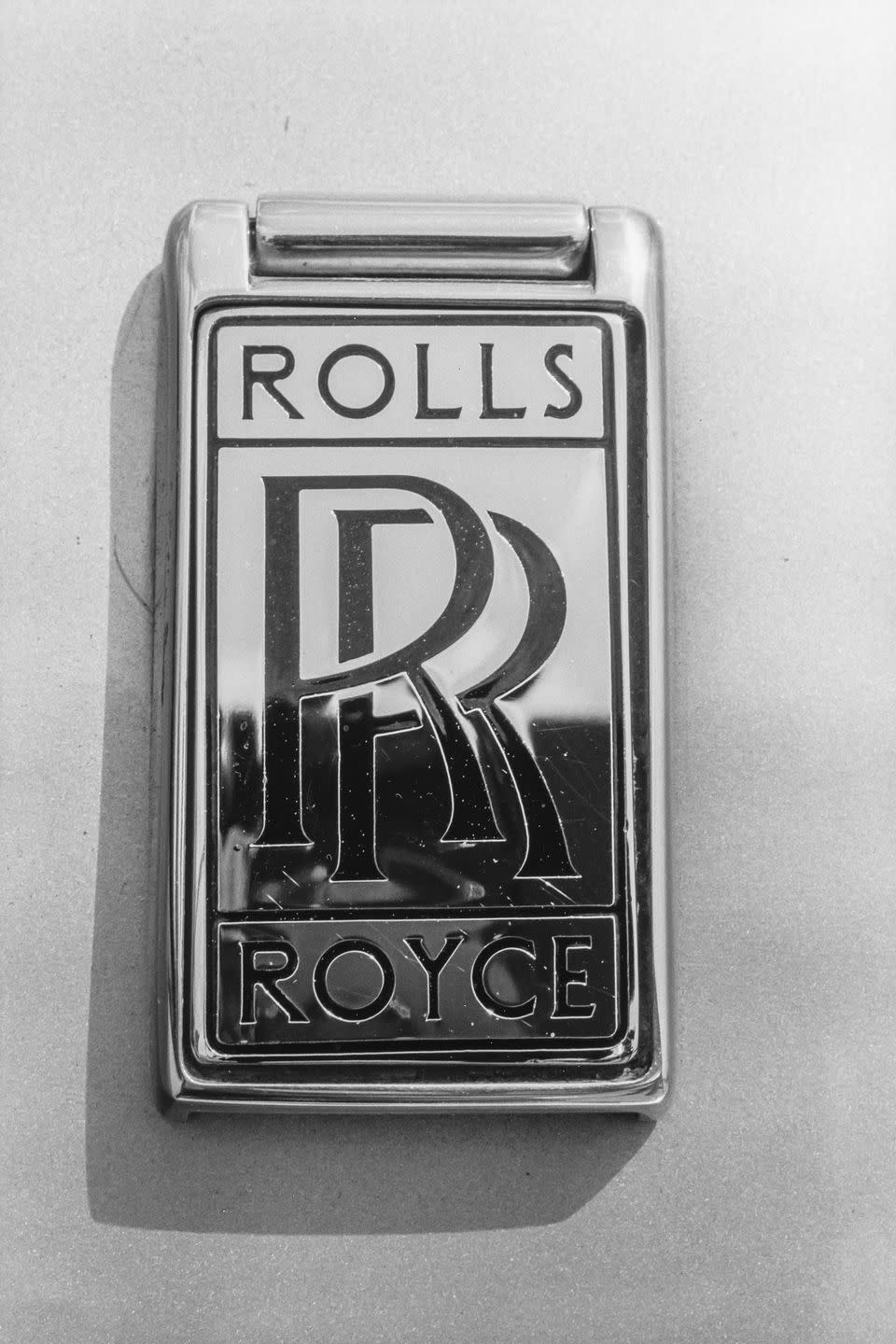
The difference between old and new is apparent largely to the driver. The shift lever still works electrical contacts. The steering and the brakes still require very low efforts, but the new car responds quickly and accurately to the touch. The steering gear is a power-assisted rack-and-pinion, a running change made to the Silver Shadow in 1977. The throttle now connects to Bosch K-Jetronic fuel injection. The brakes are four-wheel discs with two separate calipers at each front wheel. When the driver gives an order, these systems snap to. The Silver Spirit is about as big and as heavy as cars come these days, but you'd never know it—first, because control efforts are so light, and, second, because response is so quick. The steering is only 3.3 turns lock-to-lock; deft maneuvers are made with fingertip motions. The accelerator is aggressive; a little touch produces big results. The brakes are not the slightest bit squishy; during normal driving you can modulate them with great accuracy. All of these attributes are those of a great dancing partner, and the Silver Spirit's sure-footedness makes the analogy complete. Actually, the car is quite stiffly suspended. It doesn't bob and weave, and it never bottomed out on test roads that have humbled plenty of others. Moreover, the rear suspension, which is a semi-trailing-arm independent, allows no wheel patter on washboard surfaces. In dynamics, the car doesn't have a weak spot. Of course it understeers, and when you press it hard the roll angle gets a bit intimidating, but only a bit. The biggest deterrent to going fast in this car is the high price of replacement fenders.
But if you don't care, the Silver Spirit is up for the quick trip. In this regard, it reminds us of the automotive pecking order 30 and more years ago. Back then, big cars were always the fastest. Fords and Chevys got the commoners to work, and they could do some tricks when hopped up; but, in general, big Cadillacs, Chryslers, and Lincolns were the fastest things on the road.
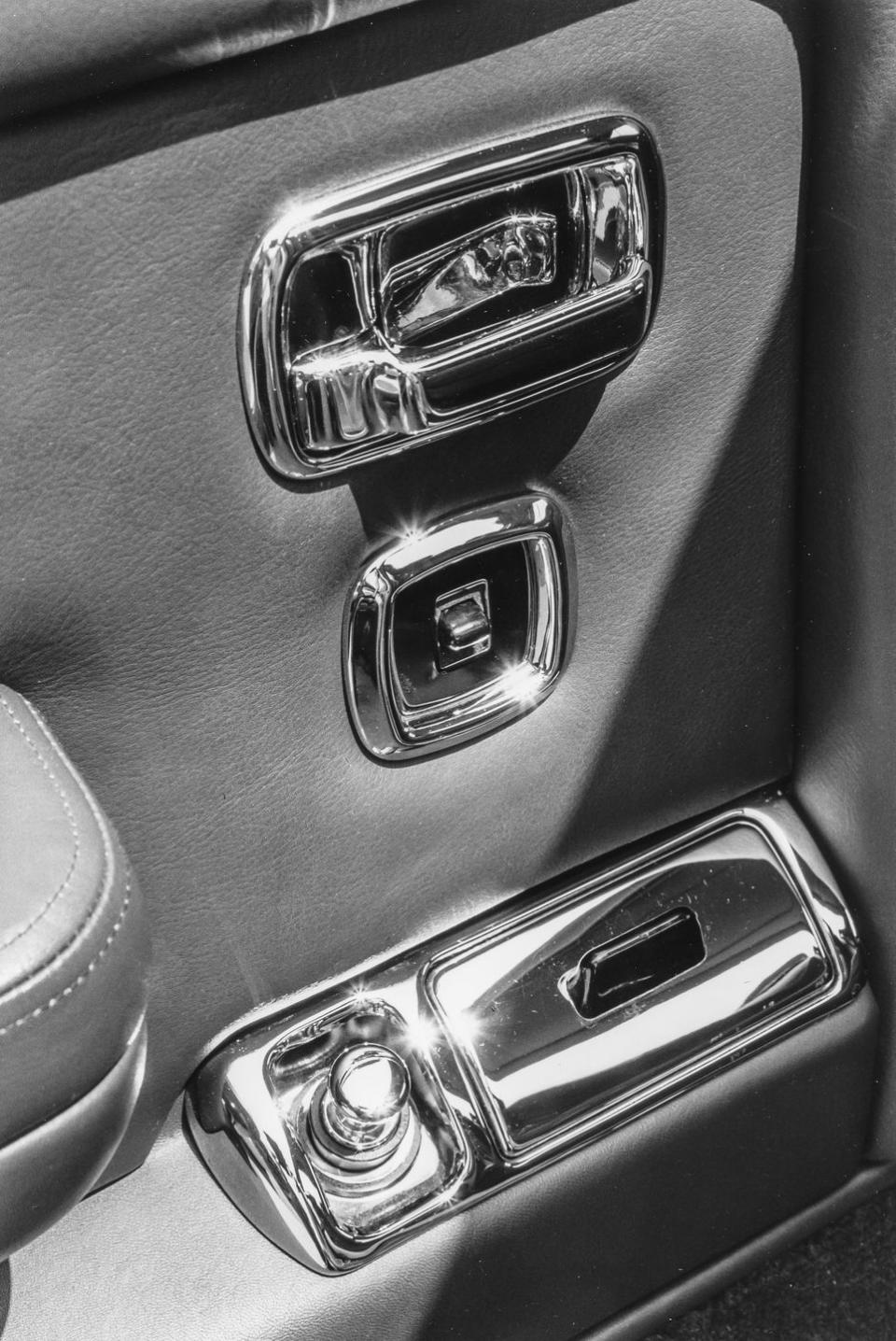
The Silver Spirit may not be quite the fastest machine available, but to lump it in with all the others in the soft-bellied lounge-car class would be a big mistake. There is a great temptation among those who make rich men's cars to concentrate all the effort on comfort and features. The suspension becomes so soft and the isolation so complete that the cars end up one-dimensional, shuffling pleasure domes. We are delighted to discover in this latest Rolls-Royce that the world's most distinguished automaker has held to a more catholic definition of the luxury car. The Silver Spirit is most certainly comfortable, it has a great deal of stretch-out room in the back seat, it has a multiplicity of little switches and gadgets, yet none of these luxury-car accouterments get in the way of driving. Rolls-Royce has not forgotten that automobiles, first and foremost, are machines of motion.
The point here is that Rolls-Royce has maintained an independent point of view as to what an automobile should be. True, if any car company can afford the luxury of being out of step, it should be R-R. But being in the position to do something and actually doing it are two different things. Around the interior of the Silver Spirit is ample evidence that Rolls-Royce intends to stick with its old ways until something better—not just different—comes along. The steering wheel is an unadorned two-spoke design molded entirely of black plastic. It's just a steering wheel, beautiful in its simplicity, and there's not another automaker on the face of the earth with the self-confidence to say "steering wheel" so unapologetically. The horn is a round button at the wheel's hub. Perfectly direct. The ignition key, having resisted routine relocation to the column, still pokes into a switch on the dash where you can see how it goes, just as you could on R-Rs of years gone by. And the headlight dimmer is still a button on the floor. After using it a while, you begin to wonder what the fuss over column stalks is all about; indeed, begin to wonder if all of these moves that we've been regarding as progress over the years are really only changes.
Still, despite these traditional ways, the Silver Spirit also contains proof that R-R has not gone reactionary on us. For years it has been said that the loudest sound in a Rolls-Royce is that of the clock ticking. This new model counts the seconds with green-glowing electronic digits, silent as sphinxes. So much for one of motoring's most prized legends.
Yet this change in no way depreciates the car. Now that the ticking clock is out of the way, the loudest sound remaining is the envy of the neighbors.
You Might Also Like

 Yahoo News
Yahoo News 
